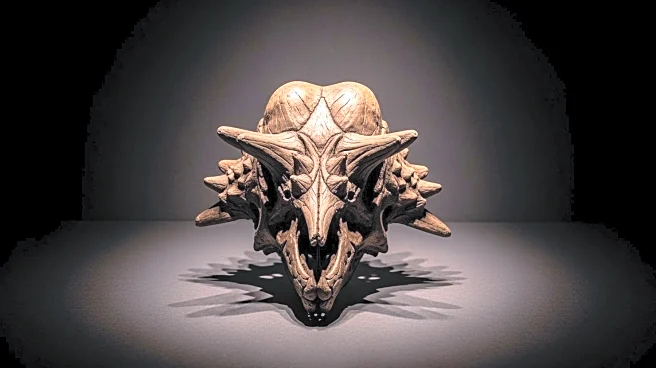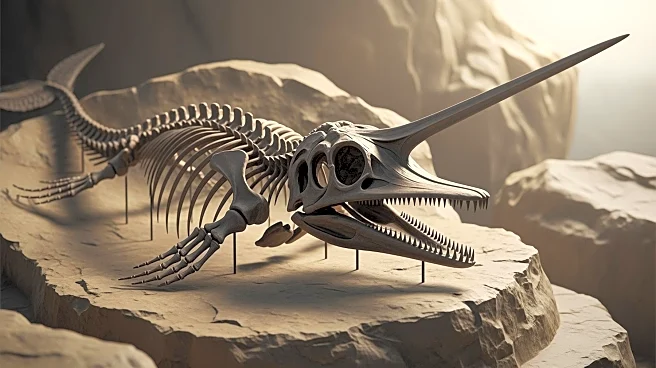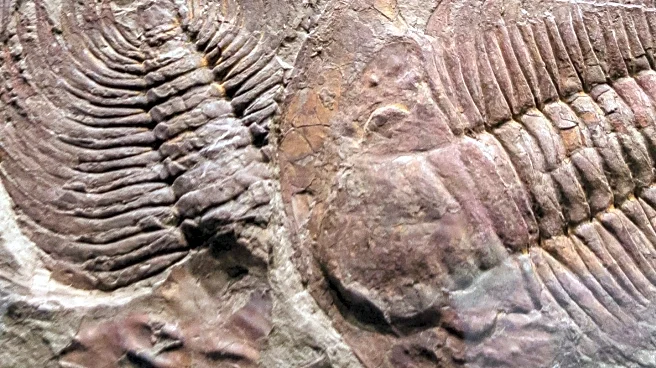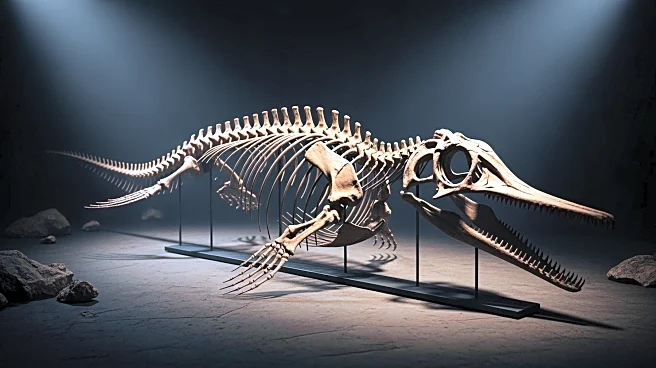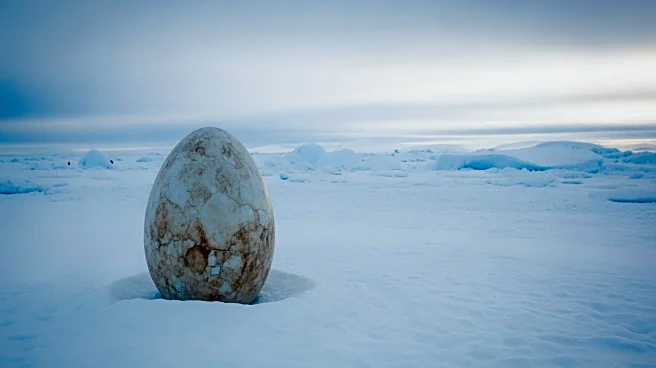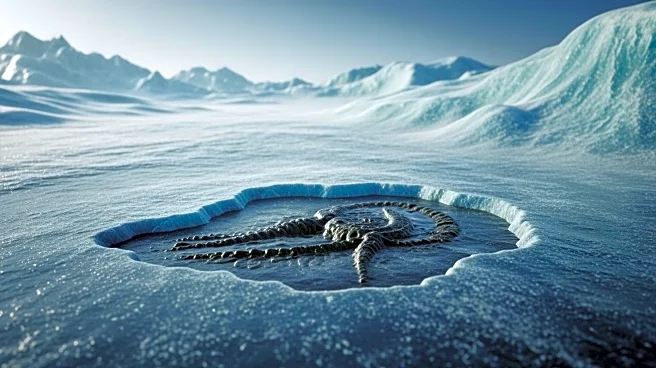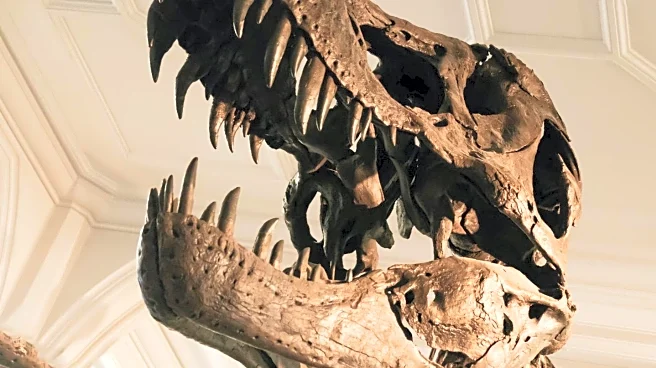What's Happening?
A significant paleontological discovery has been made in southern Mongolia, where a new species of pachycephalosaur was unearthed. This discovery, led by paleontologist Chinzorig Tsogtbaatar, includes
the most complete skeleton of this dinosaur group ever found. The fossil, dating back to the early Cretaceous period, is approximately 110 million years old, making it 15 million years older than previously known specimens. The pachycephalosaur, known for its distinctive domed skull, was a plant-eating dinosaur. The discovery includes the first-ever hand bones of a pachycephalosaur, which were notably small. The fossil was found to be a juvenile, at least two years old, with a fully developed dome, suggesting that these dinosaurs began using their domes at a young age.
Why It's Important?
This discovery is crucial for understanding the early evolution of pachycephalosaurs, a group of dinosaurs about which little was previously known due to incomplete fossil records. The completeness of this specimen allows scientists to gain insights into the physical characteristics and potential behaviors of these dinosaurs. The findings could lead to new hypotheses about their lifestyle, including how they might have used their domed heads in social interactions or territorial disputes. This discovery not only fills a significant gap in the fossil record but also enhances our understanding of dinosaur evolution and diversity during the Cretaceous period.
What's Next?
The fossil, named Zavacephale rinpoche, is expected to inspire further research into pachycephalosaurs and their ecological roles. Scientists may conduct additional studies to explore the biomechanics of the domed skull and its evolutionary advantages. The specimen's return to Mongolia could also lead to more collaborative research efforts between international and local scientists, potentially uncovering more about the region's prehistoric life.
Beyond the Headlines
The discovery highlights the importance of international collaboration in paleontology and the potential for significant findings in underexplored regions. It also raises questions about the preservation of fossils and the ethical considerations of fossil repatriation to their countries of origin. As more complete specimens are found, they could challenge existing theories about dinosaur behavior and evolution, prompting a reevaluation of how these ancient creatures lived and interacted.
